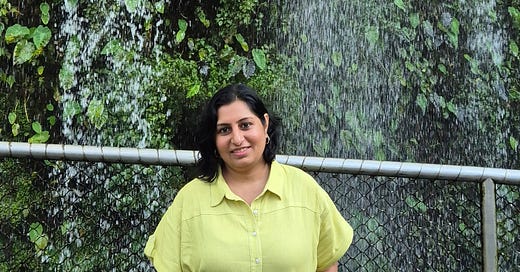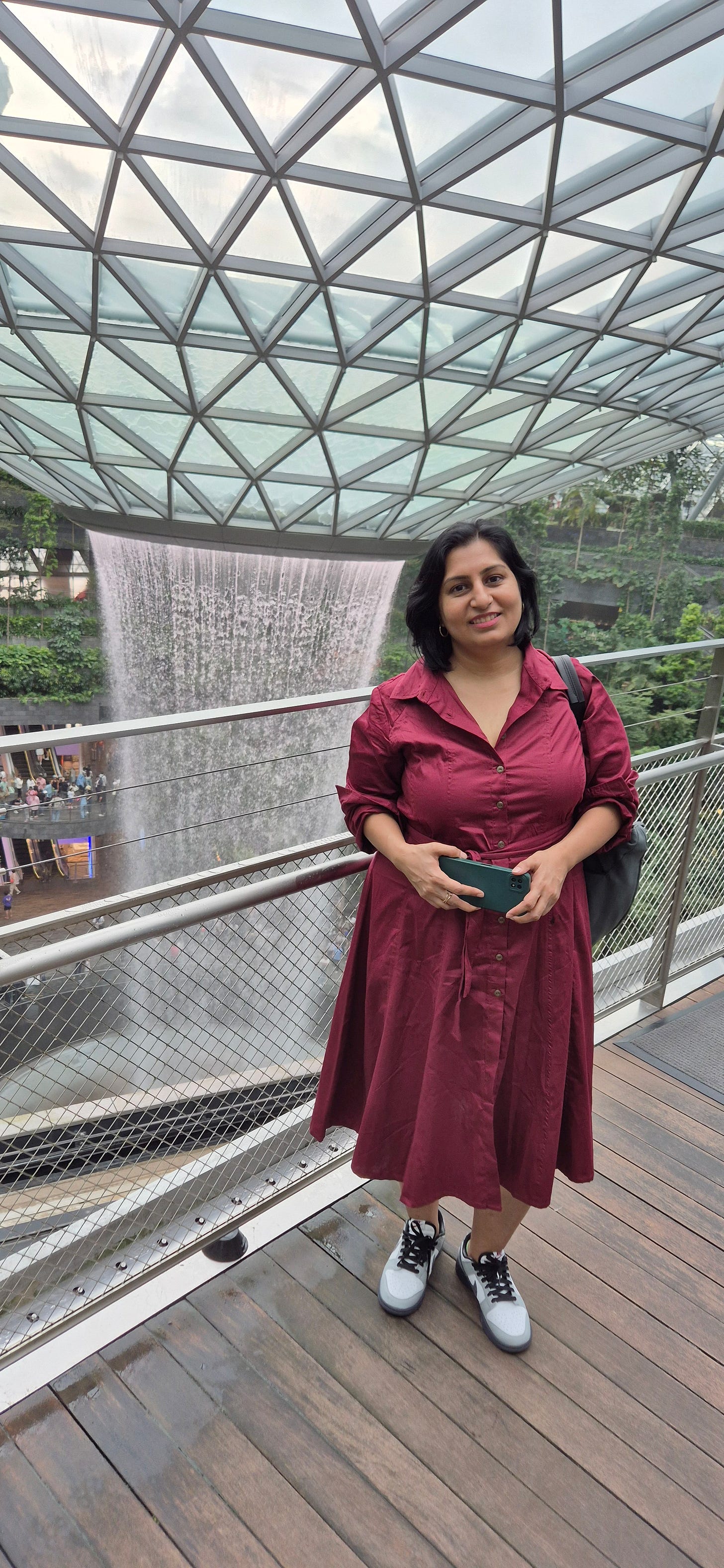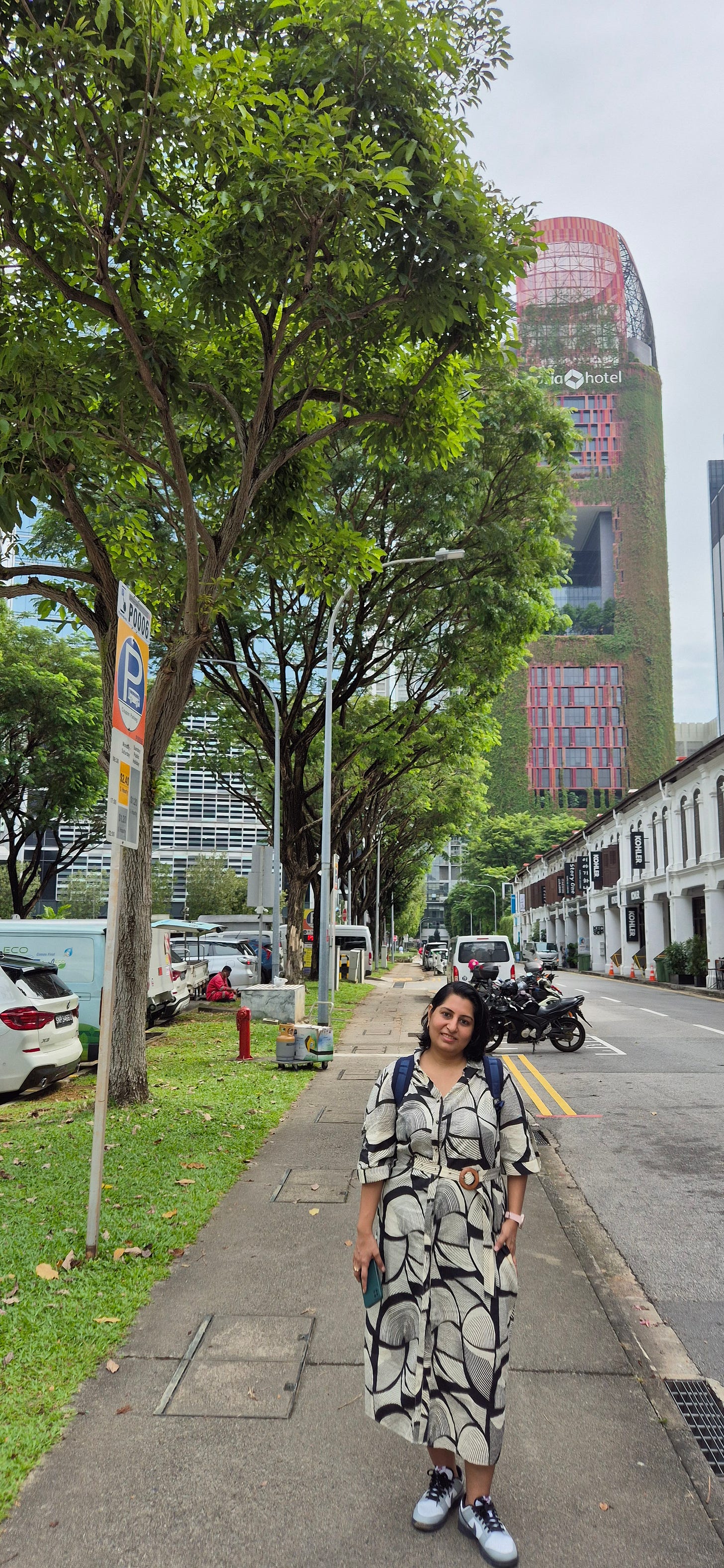Why Singapore Stole My Heart!
Reflecting on my journey through Nature, Culture, and Unforgettable Experiences!
I visited Singapore in November 2024, and it felt like a full-circle moment as I explored the biophilic designs in person at Jewel Changi Airport, Gardens by the Bay, and Hotel Oasia. The staff at Hotel Oasia kindly allowed me to tour their property.
Famously called the 'City in Nature', Singapore showcased how serious it is with its commitment to citizens with unparalleled public infrastructure. Every public area had inclusive infrastructure, with pedestrian-friendly zones. Senior citizens and people with disabilities or pregnant mothers could quickly move around the city because of favourable architecture and well-kept restrooms (with diaper changing stations, sensor-based flushes and handwash dispensers, and separate bins for sanitary napkins). Specific restrooms were also themed with indoor landscaped gardens—an experience not to miss! I know I've raved about restrooms, but I think their conditions reflect the overall maintenance of a place.
Several establishments also offer vegetarian and vegan cuisines, and many encourage patrons to bring reusable cutlery and containers. You must pay a heavy price if you want disposable or take-away containers. Public bins were everywhere, so I saw minimal litter. Designated smoking areas were also conveniently located near bins, promoting cleanliness and hygiene. Since Singapore is a melting pot of cultures, you can see the flavours of Indian, Chinese, Malay, and more on every street. The locals were exceptionally polite, helpful and courteous.
Singapore places great importance on art and culture. You can often stumble upon Chinese or Western opera performances, musical theatre, pop-up exhibitions, carnivals, light and water shows, and shopping areas beautifully decorated for Deepavali, Christmas, and other religious festivals. While India is vast and geographically diverse, the cultural richness packed into this relatively small country is more conspicuous, though it matches Chennai in size! The cultural diversity and vibrant social life—especially for nature enthusiasts—are more overtly expressed in Singapore.
The strong emphasis on biophilic architecture seamlessly integrates nature with urban living. One cannot miss the striking contrast between the skyscrapers of the business district and the old-town trading buildings of Clarke Quay overlooking a broad river. You will find ponds, lakes, and mini forests adjacent to artistic high-rises, with biophilic buildings around every corner. I also noticed several solar farms throughout the city, and the planning to channel waterways (mainly to control floods) is commendable.
Every tourist site has a dedicated section on Singapore’s history, and there is no shortage of nature trails, botanical gardens, or wildlife reserves. Informative placards highlight the significance of each tree or plant, allowing visitors to learn about endangered species and the history of various flora and fauna, even in unexpected locations. Some areas feature state-of-the-art, interactive game-based installations that give insights into Singapore's biodiversity and history.
The streets and pavements are lined with landscaped greenery. The government has implemented various schemes and policies to manage traffic, making it possible to travel 35 to 45 kilometres in just 30 minutes—unheard of in Chennai or other Indian metros. Although we occasionally took cabs, public transport was the real hero. The electric buses and ferries were comfortable and efficient, with no hassle over seats or overcrowding. Trying out the eco-friendly cable cars (and the new SkyOrb) was an unmatched, unforgettable experience at Sentosa. The metro system is cost-effective and well-connected, and the government has made public transport affordable to encourage its use while heavily taxing private vehicle ownership. But the point here is that public transport is well-maintained and high quality, making it popular among people from all social strata—something still uncommon in India.
I did not encounter smoke, smog, or pollution even during peak traffic hours. Breathing in fresh air and experiencing zero fatigue was surreal. My biological clock felt reset during my stay; I woke up early without insomnia, felt active during the day without coffee, and managed not to fall sick! I noticed people jogging or cycling in the parks at 9 or 10 PM and individuals of all ages using outdoor gyms at various times. I also spotted many active and independent senior citizens. It’s incredible what nature can do for physical and mental health! The suburbs of Chennai, where I come from, differ significantly from this experience.
I am keen on exploring the startup scene in Singapore as well as the experiences the country offers to educate people on sustainable living—ecofarms, upcycling workshops, bicycle tours and more—and visit the Tengah Ecotown and Johor Bahru's Ghost City while I am at it!







